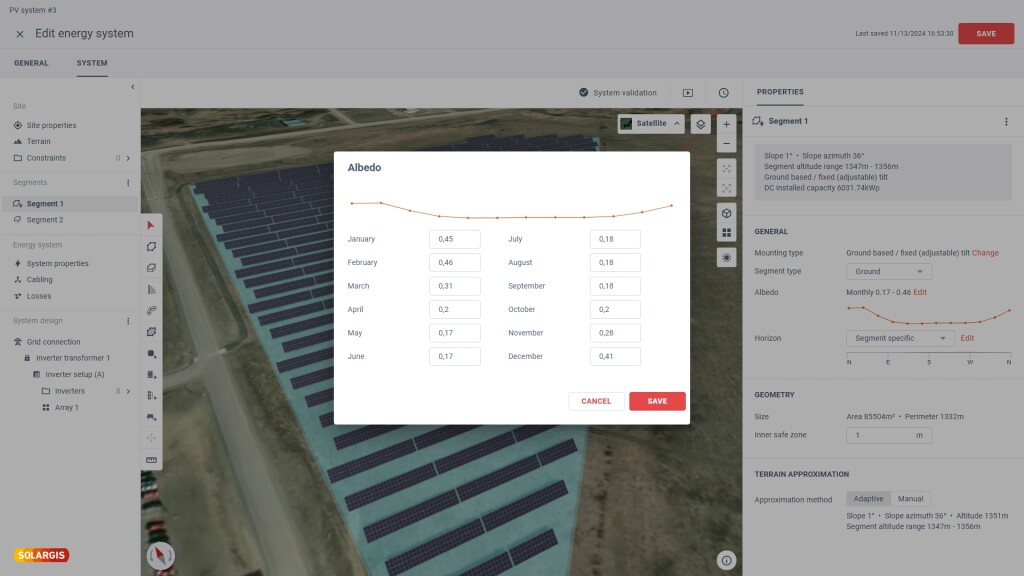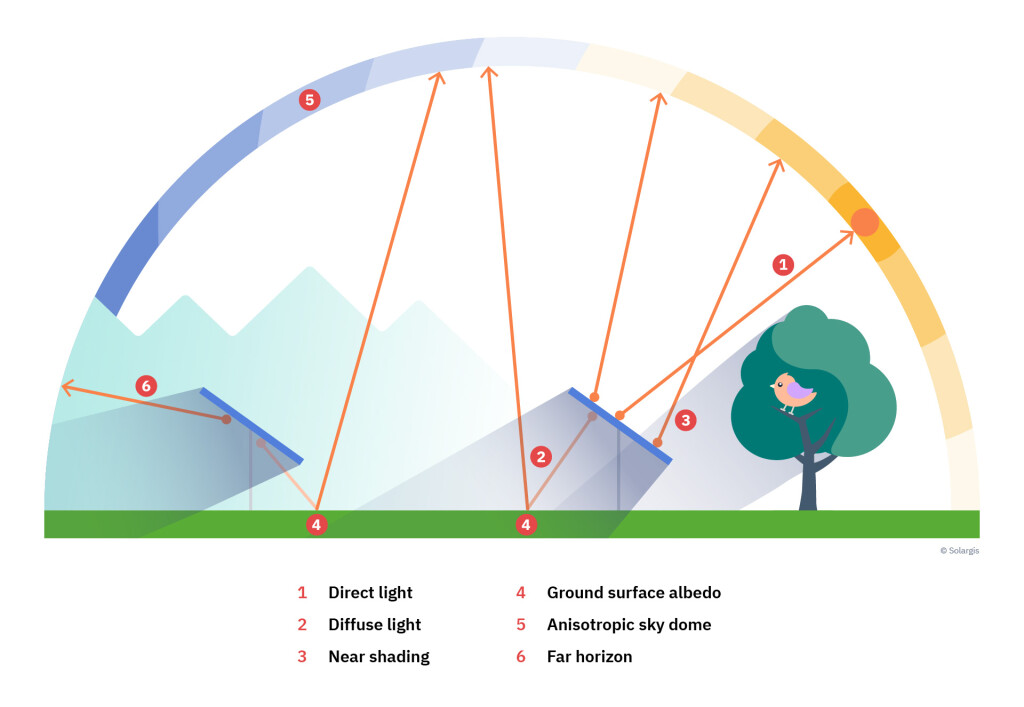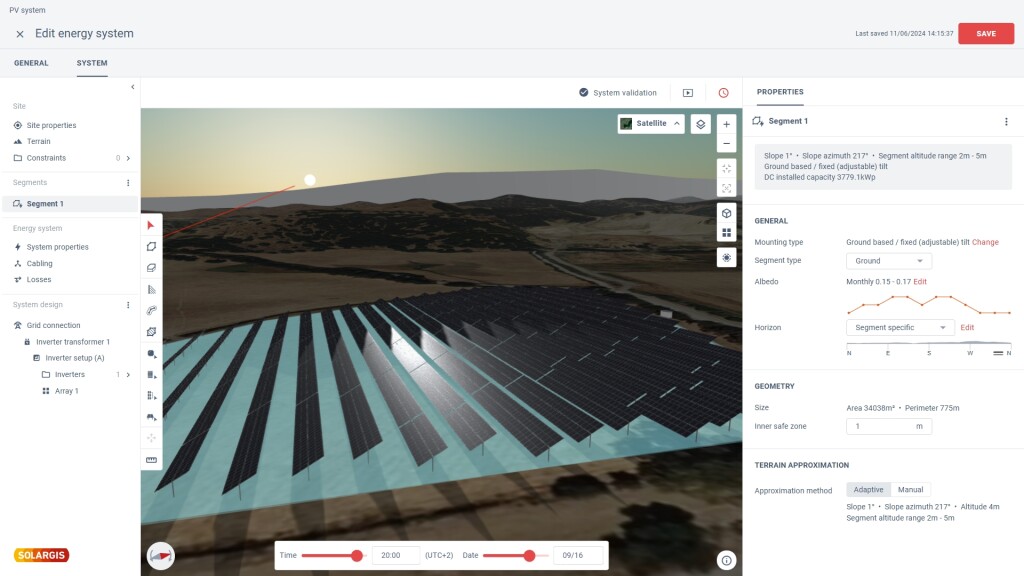本页未翻译。您正在浏览的是英文版本。
Bifacial photovoltaic (PV) modules dominate in modern solar projects, as they are more efficient, capturing sunlight on both sides of the cells, and generating more energy than monofacial PV modules. According to the latest research study, the global bifacial solar market is now valued at nearly $100 billion and is projected to grow by 12.7% from 2023 to 2028.
However, the shift to bifacial photovoltaics requires a different approach to feasibility evaluation compared to traditional monofacial technology. Developers must work with more accurate and detailed data sets, including solar radiation and ground surface albedo to better understand interaction of reflected solar radiation with bifacial modules and to ensure reliable performance evaluation.

The discussion about the ability of current PV simulation software to accurately simulate the electrical output from bifacial PV modules leaves more questions than answers.
In modeling solar radiation, most of the industry-used PV simulation tools use the simplified view factor model. The view factor simulation, based on the isotropic sky model, is a fast and easy method for monofacial PV systems, but less accurate in rear-side solar radiation estimates when applied to bifacial modules.
The isotropic sky model is a simplified approach that assumes the intensity of diffuse sky radiation is uniform across the sky dome, ignoring the dynamic nature of reflections and the complexities of surrounding surfaces. This simplification means that the view factor model does not account for variations in reflections and shading from nearby objects like PV modules, structures, trees, buildings, and objects.
The view factor model is useful for quick simulations in the pre-feasibility phase of a project, but it is less suitable for more detailed analyses and a full evaluation of the project. It often provides inaccurate energy yield predictions, which can lead to suboptimal system designs, and can negatively impact the financial viability of bifacial PV projects.
The longer these limitations persist, the greater the financial risk for developers and investors alike. With bifacial systems becoming industry mainstream, there is an urgent need for more advanced simulation techniques that offer greater accuracy.
Backward ray tracing technology and the anisotropic sky model address the limitations of the simplified view factor model. Unlike the isotropic sky model (used in the view factor model) which assumes uniform diffuse radiation, the anisotropic sky model captures the complexities of reflected radiation by considering the dynamic behavior of the sky dome and surrounding objects.
The ray tracing method provides a detailed and realistic simulation of how reflected light interacts with bifacial PV modules, considering the impact of surrounding objects such as ground surface, back side of the modules, trackers, structures and nearby objects, delivering more accurate energy yield estimates.
By factoring in the real-world variables, the ray tracing and anisotropic models offer more reliable energy yield simulations that account for both front and rear-side irradiation.

Solargis Evaluate is the first PV simulation solution in the market that uses ray tracing technology and anisotropic sky model for delivering high-resolution energy yield estimates.
It considers all kinds of shading defined by both horizon data in the Solargis data model and shading objects present in the physical world model. The precise path of sunlight is simulated by tracing individual rays, between the sky and the surface of solar cells, as it travels through the 3D environment.
3D ray-tracing-based simulation allows the software to calculate for hilly terrains and bifacial panels with no limitation. While the view factor offers fast calculation, ray tracing delivers more accurate results that are computationally intensive, requiring detailed geometric information about the scene and precise calculations for each ray, making simulations more resource-intensive.
Solargis Evaluate 2.0 takes the accuracy of bifacial simulations to the next level by using site-specific albedo values, as well as sub-hourly time series data for solar radiation. This approach allows for short-term variations in both front and rear-side radiation to be captured throughout the day. Cloud computing offers a unique scale-up opportunity to provide a much more nuanced picture of energy yields for the entire PV energy system.

With the new Evaluate, the solar industry is moving toward more accurate and reliable PV simulations, setting a new benchmark for PV system evaluation. The increased accuracy is critical for ensuring that bifacial systems meet performance expectations and deliver the financial returns.